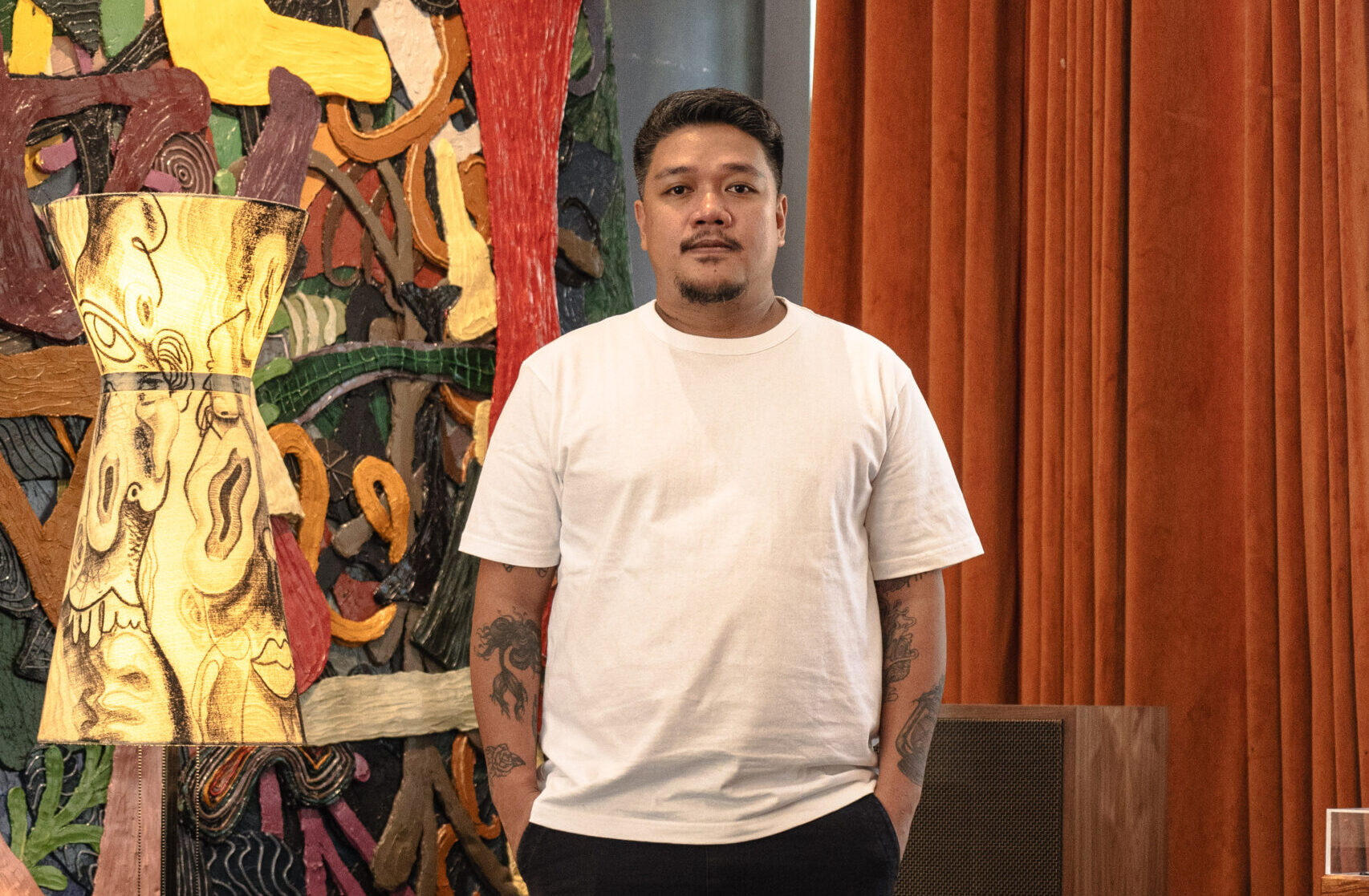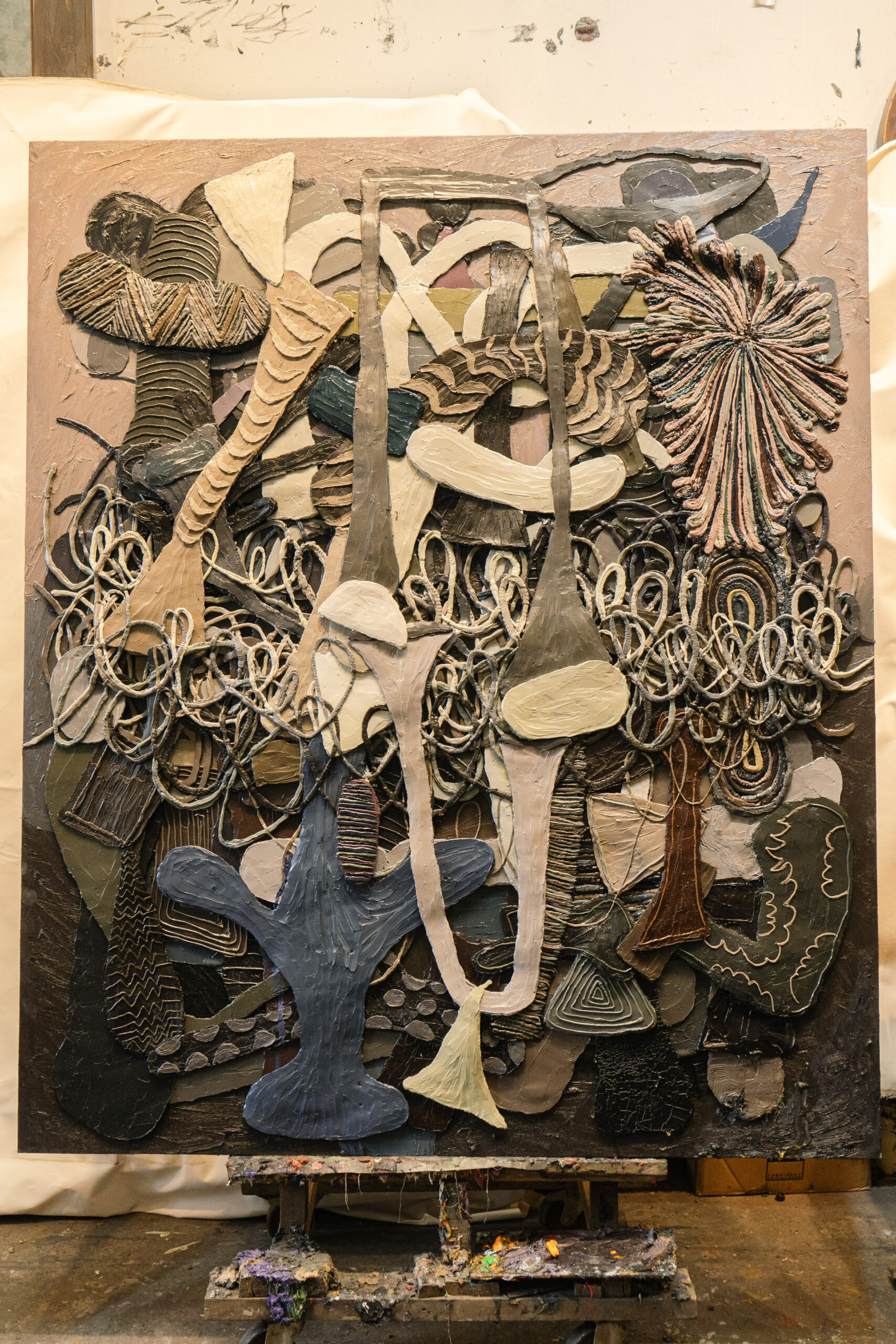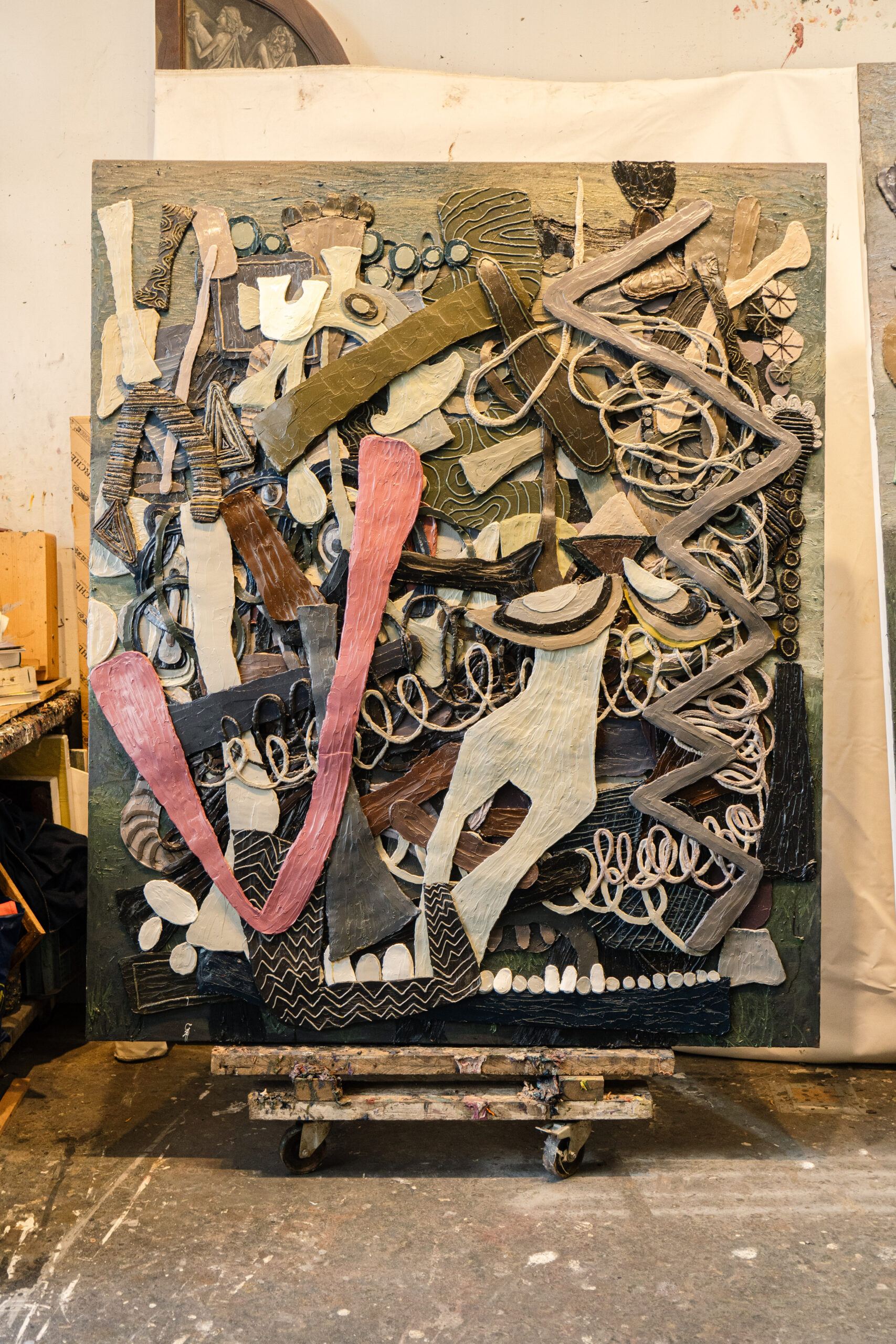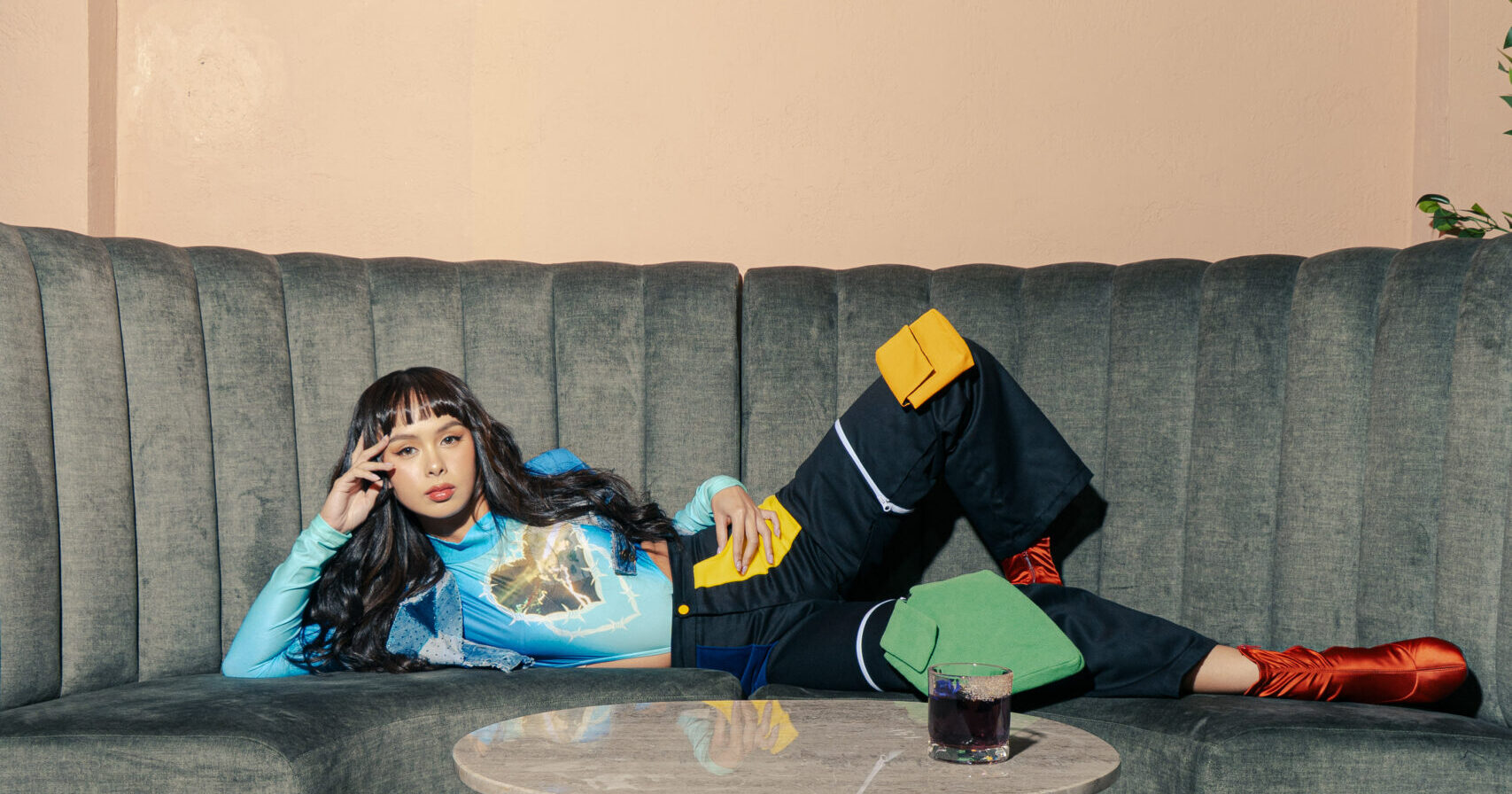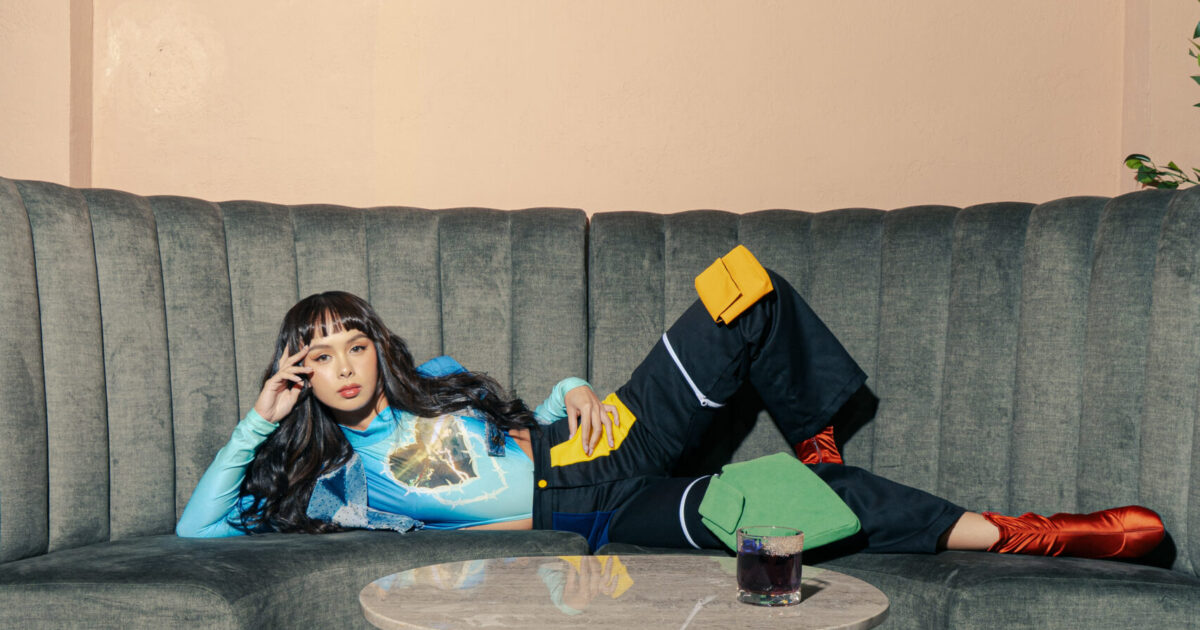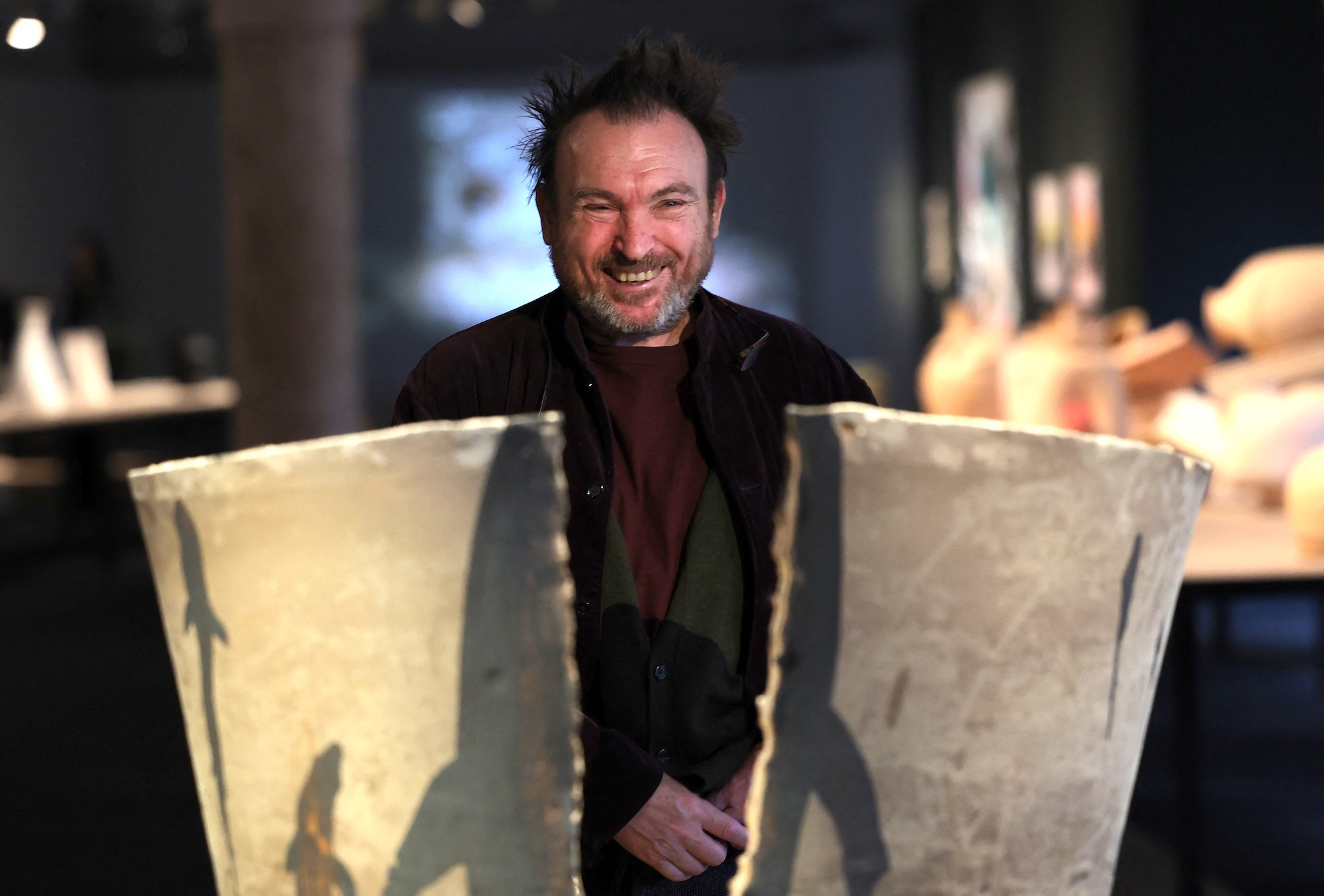For Art Fair Philippines 2024, critically acclaimed artist Jigger Cruz unveils paintings with dense pigment that effuse light
The signature swirling style that we know Jigger Cruz for is on pause for now. You’ll still find his pigments in impasto—but now they are loaded on so thickly, the shapes of pure paint form shadows. He still paints in murky hues, but for these massive works for Art Fair Philippines, he veers toward a spectrum of monochrome.
Cruz is literally and unironically “overpainting” and while his works weigh physically heavy, these geometric compositions give an impression that feels light.
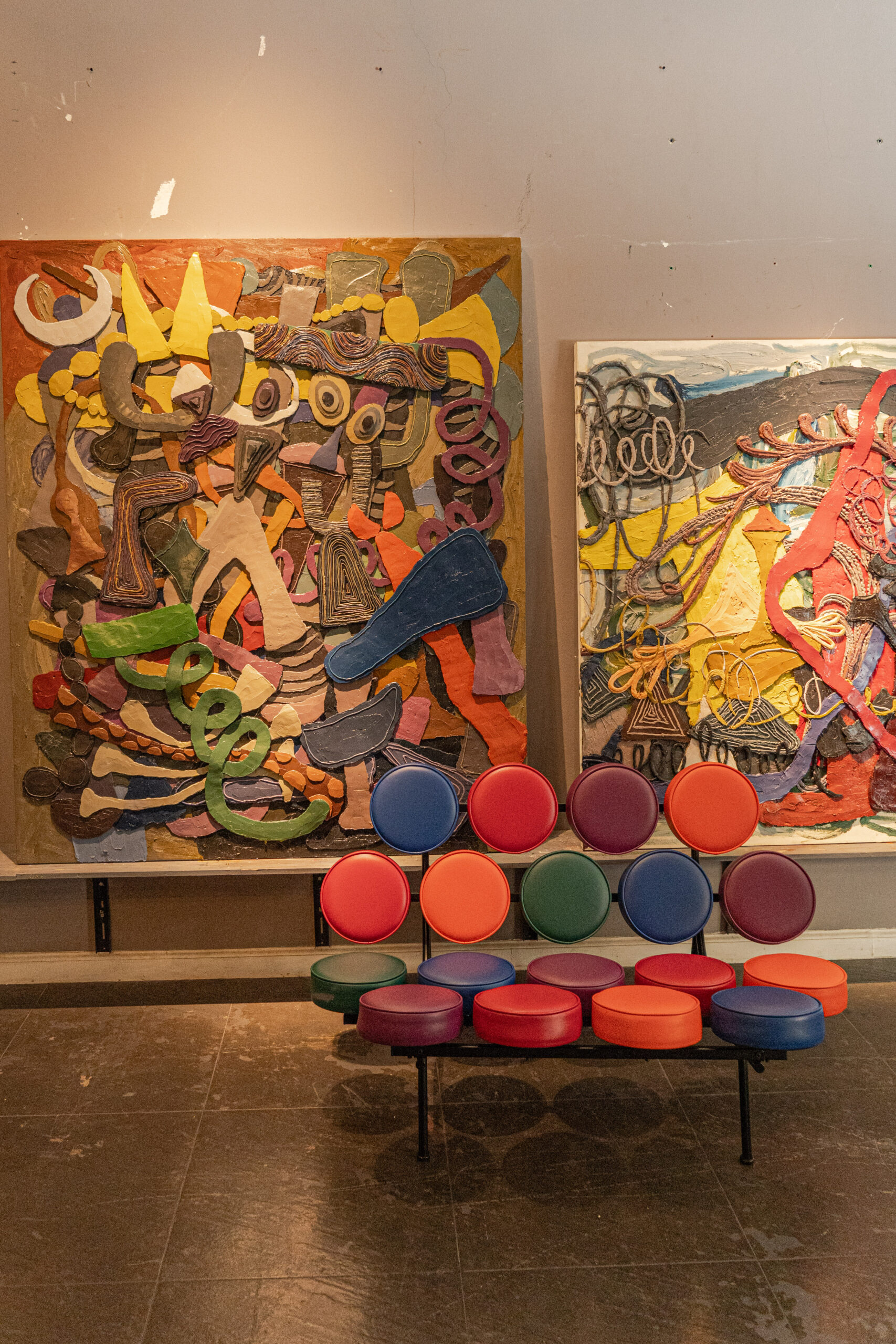
At present, Cruz is well-prepared for his upcoming projects. It is a few weeks before Art Fair Philippines, where Cruz will be presenting in the special ArtFairPH/Projects section with his long-time friend and collaborator, curator Norman Crisologo. Against the wall are some colorful pieces Cruz is showing in Lugano, Switzerland this coming April. He tells us he has a show in Guangzhou, China, later on in the year.
The artist has been at work and there seems no need to cram. Espresso in hand, he reclines against the kitchen bar of his home-turned-studio, where he spends his time both creating art and exploring his hobbies.
In an exclusive interview with LIFESTYLE.INQ, Jigger Cruz welcomes us into his space, with an inside look into his latest work.
Situational Changes: Settling into a New Studio
While the space pre-pandemic was filled with paintings and sketches collected from fellow artist friends, the works on display show a majority of his own paintings. Cruz’s own collections are now in his personal home.
Cruz tells us this is his way of separating work and home so that he can focus on being a father and spending quality time with his family after a day of work.
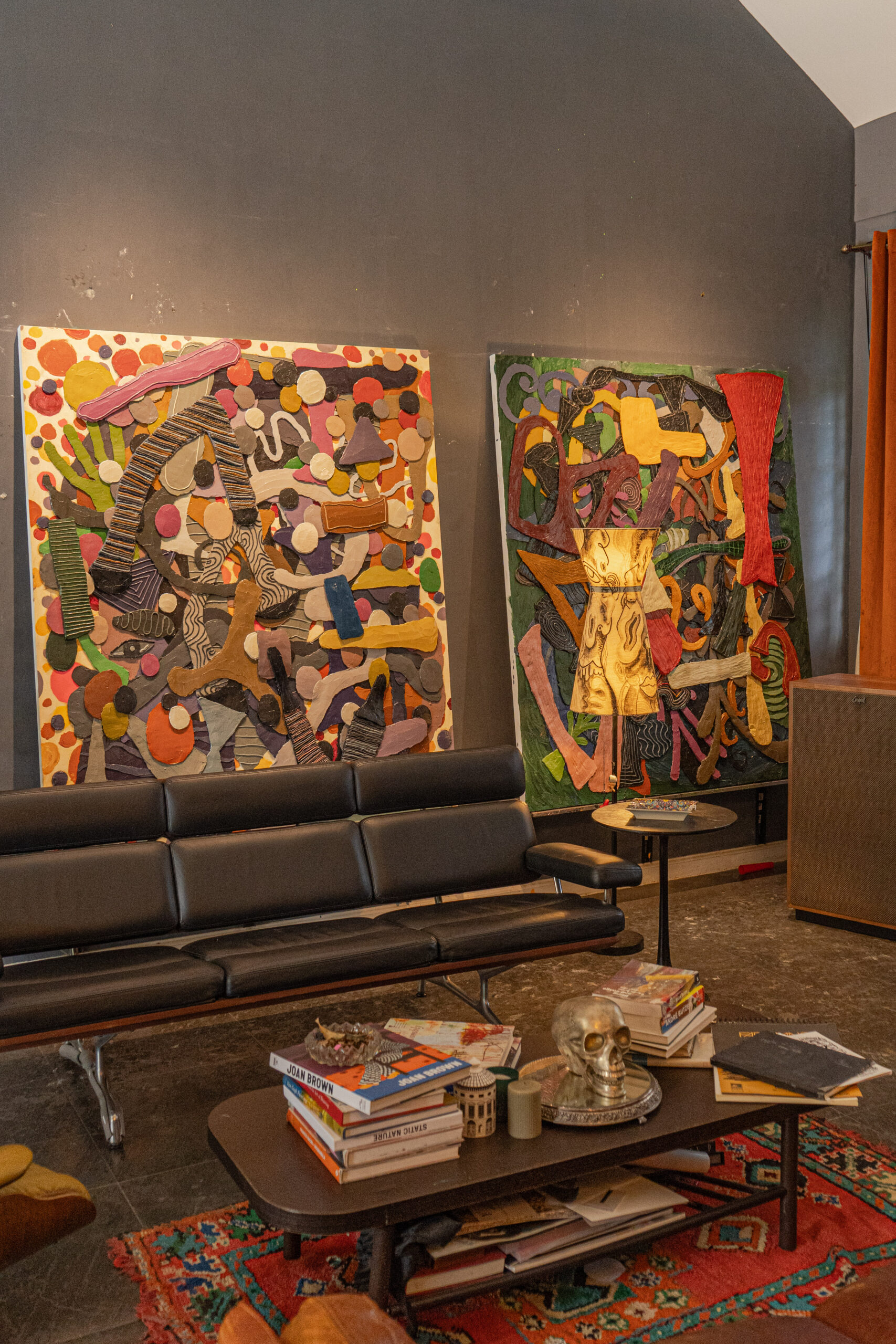
Cruz laughs as he tells us this artist’s studio is now a man’s den and a party house. All around the living room are wires and drum machines. Cruz has been making ambient music, producing sounds that are discordant, yet ethereal. The tunes sound a bit like Brian Eno but with a lot more crashing cymbals. A white piano stays in the corner of his foyer. His drum kit is in another room somewhere. Expressing a lifelong penchant for music, Cruz also plays with a reggae funk band, often at The 70s Bistro Bar along Anonas in Quezon City. “Frustrated musician ako,” he says.
As someone with a Renaissance spirit, Cruz is someone who has always had a versatile range of hobbies. He has amassed a collection of motorbikes, with an affinity for vintage bikes, especially BMW. Along with his partner and riding groups, they have gone on long tours in and out of the country. Lately, he tells us he has been getting into offroading, taking 4x4s on bumpy roads, and setting up tents in unexpected places.

The artist gained acclaim after his work caught the eye of collectors across Europe. And since then, the Malabon-born artist has experienced success across the globe. After graduating with a Bachelor of Fine Arts at the Far Eastern University, he took courses at the De La Salle College of Saint Benilde. Later, Cruz took an apprenticeship under Filipino painter Manuel Ocampo after a creative rut. His international expositions that followed are too many to list—across Asia, the US, and Europe, with work found in public collections like the Guggenheim in New York and the Saatchi Collection in London.
As such a well-known artist, you can’t deny Jigger Cruz is something of a celebrity. Despite this, he is undoubtedly lowkey—probably one of the most successful, yet also most humble people you will ever meet.
A Departure from Past Styles
When an artist changes his work, it reflects the evolution in his self-expression, and often dynamic improvement.
In the past, Cruz would paint grand scenes and detailed figures on canvas, often emulating the Classical art of by European masters, specifically Flemish and Post-Renaissance renditions. Afterward, he would deface the painting through impasto, spray paint, and even burned pigment, bridging a contemporary aesthetic with classical art history. This created a sense of both mystery and mythos, as only the artist himself had seen the painting underneath.

Jigger Cruz recalls this past process as a time of bravado, where he was eager to demonstrate his skill at fine art techniques. But after many years, Cruz has outgrown the brooding, almost self-deprecating practice that skyrocketed him to success over a decade ago.
“I outgrew that. I don’t need to please anyone… When you’re younger, kailangan maangas. Pero tama rin na dinaan yung stage na yan, yung process ng growth. Dapat rin nila [artists] maexplore at magikot.”
(“I outgrew that. I don’t need to please anyone… When you’re younger, you need to be arrogant. But it was also right to go through that stage, the process of growth. They [artists] should also be able to explore and move around.”)
Cruz says with exasperation how in the past, he had become obsessed with conceptual and theoretical art studies. He recalls reading the works of Derrida, Heidegger, and Hegel with an exasperated sigh. Although that foundation of theory and intention still permeates each work, one can’t help but wonder if it’s the joys of fatherhood that have influenced this new style.
READ: Art Fair Philippines shines a spotlight on photography
Recent Visual Experiments
In this new work, Cruz tells us how he missed the sense of enjoyment that seemed to falter during the peak of his career—when the artist’s studio was like a playground. Now, the studio seems to embody the playground setting more, through shapes that emulate a sense of play, and explorative experimentations with color, while continuing his medium in oil paint. On the shapes he says,
“Gusto ko maging fun, playful… I still love patterns at simple lines. Gusto ko yung kayang gawin ng bata. Sila yung unaware. Yun yung nagwawala pag yung artist masyado nag-aaral. Nawawala yung pagiging childlike at nagiging formulaic.”
(“I want to be fun. It was playful… I still love patterns and simple lines. I like what the child can do. They are the ones who are unaware. That’s what gets lost when the artist studies too much. The childlikeness is gone and it becomes formulaic.”)
It is also commonly known but often forgotten that Jigger Cruz is color blind. Much of his earlier work features greens and purples, exactly the hues he is color-blind to. He can sense the warmness and coolness of the shades. He points to the leaves of the trees outdoors and tells us matter-of-factly that he knows those leaves are green, and knowing this can transmute the feeling to coloring. For his recent monochrome work for AFP, these variations were more difficult to deal with—as he would only feel light, medium, and dark colors.
Cruz also continued his use of oil paint, when many artists decided to transition to acrylic. He gushes,
“Parang sacred sa akin yung oil paint. It’s a part of history, yung pagiging organic, even in Byzantine and primitive times…. It’s a more sincere material. Nakakachallenge din.”
(“Oil paint seems sacred to me. It’s a part of history, that is organic, even in Byzantine and primitive times… It’s a more sincere material. It’s also challenging.”)
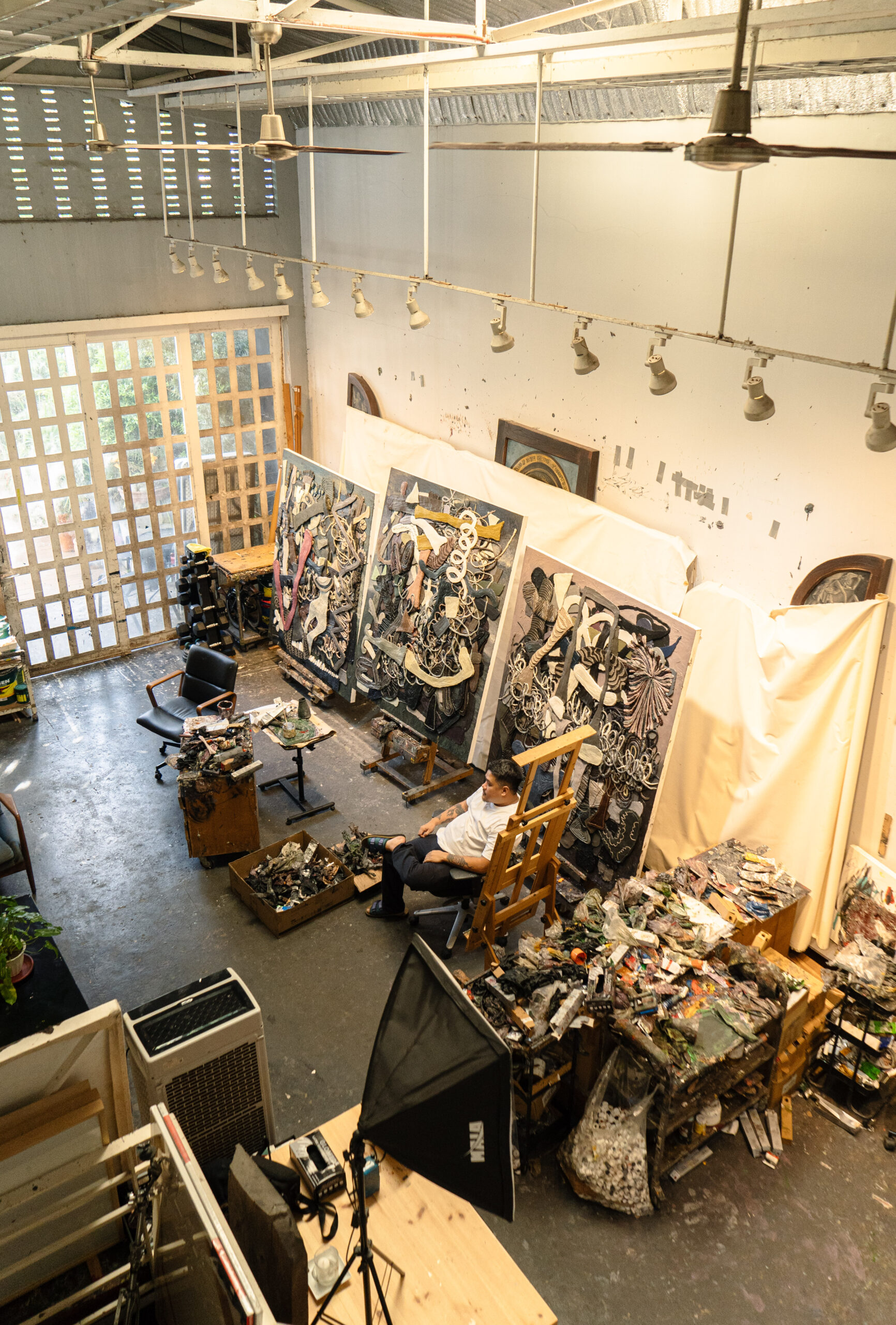
Cruz now uses oil paint without a brush, wielding a palette knife as his main tool of choice. As a result, the layers are more sculptural, literal geometric cut-outs that simplify details. The works are made with a sense of patience, as the waiting time for each layer of impasto shapes can take up to two weeks, if not a month to dry. He lets go of the figurative and this distinctive style we first fell in love with, to mature into new techniques that show a sense of confidence and assertiveness.
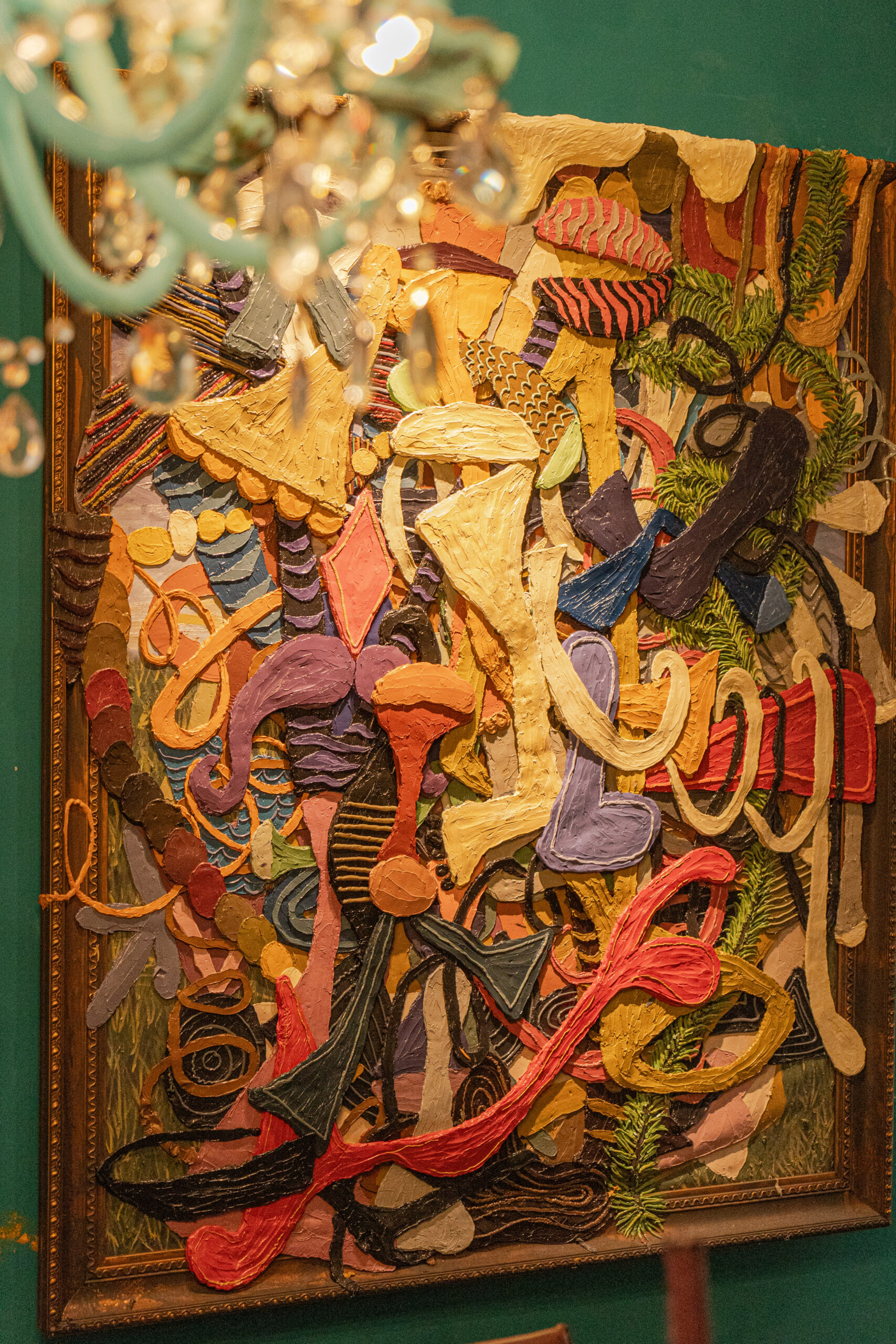
In this latest work, Cruz grins as he tells us,
“Kahit action painting ako dati, mas conscious ako sa balancing, composition, yung pagigiging complex ng details. Ngayon it’s simplified and mas honest. Matissa, yung daughter ko, same lang yung aesthetic. I also want to put triangles or circles…Baka mamaya when I grow much older siguro one circle lang yung ginagawa ko.”
(“Even though I used to be an action painter, I’m more conscious of balancing, composition, the complexity of details. Now it’s simplified and more honest. Matissa, my daughter, has the same aesthetic. I also want to put triangles or circles…Maybe later when I grow much older I’ll only do one circle.)
Cruz makes me think of a favorite quote by Aldous Huxley, “It’s dark because you are trying too hard. Lightly child, lightly. Learn to do everything lightly. Yes, feel lightly even though you’re feeling deeply.”
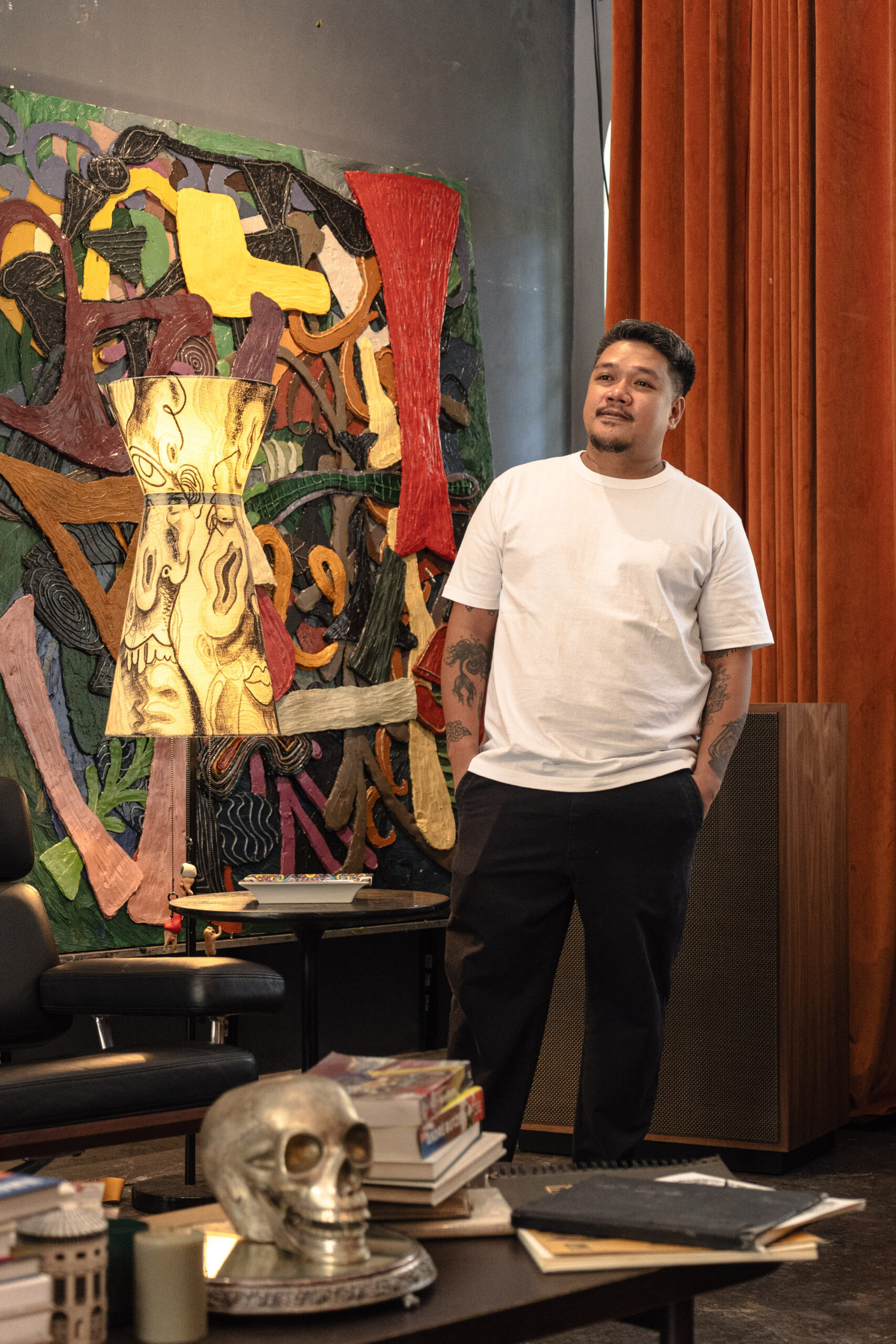
In Picasso’s huge range of work, he veered towards a more simplified abstract style later in life. Mark Rothko first started with the abstract expressionist movement before the pure hues of his color field paintings. Ellsworth Kelly dabbled in various styles before his boldly simple works, too.
It makes you wonder, does the trajectory of a master progress from chaos to calm? As Cruz lets go of his almost Gothic early work and transitions into pieces that show simplicity and light, it makes you think it could be so.
Jigger Cruz’s ‘s presentation Dialectic Disruptions is on exhibition from February 16-18 at Art Fair Philippines 2024 at The Link, Ayala Center, Makati City.

